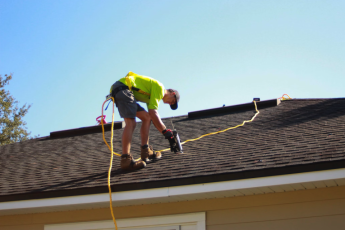Why Is Quality Roofing Crucial for Your Home? Tips for Making the Best Choice

When it comes to home improvement, roofing might not be the first thing that comes to mind!

However, the importance of a good roof cannot be overstated. Your roof is your home’s first line of defense against the elements, and it plays a critical role in maintaining the overall structure and integrity of your house.
So, why is quality roofing so crucial for your home, and how can you make the best choice when it’s time to install or replace a roof? Let’s dive into these questions and explore some essential tips to guide you.
The Importance of Quality Roofing
Protection from the Elements
Your roof is constantly exposed to the harshest elements—rain, wind, snow, and sunlight. A quality roof acts as a shield, protecting your home from water damage, leaks, and structural issues that can arise from prolonged exposure to the weather. Without a strong, well-maintained roof, your home is vulnerable to a range of problems, from mold and mildew to foundation damage.
Energy Efficiency
A good roof doesn’t just protect; it also insulates. High-quality roofing materials can significantly improve your home’s energy efficiency. They help regulate the temperature inside your home, keeping it cooler in the summer and warmer in the winter. This means your heating and cooling systems won’t have to work as hard, which can lead to lower energy bills.
Enhancing Curb Appeal
The roof is one of the most visible parts of your home, and its appearance can have a big impact on your property’s curb appeal. Thus, residential roofing can enhance the overall look of your home, adding value and making it more attractive to potential buyers if you ever decide to sell. On the flip side, a roof that’s in poor condition can detract from your home’s appearance and lower its market value.
Longevity and Durability
Quality roofing materials are designed to last. While cheaper options might save you money upfront, they often require more frequent repairs and replacements, which can be costly in the long term. Investing in high-quality roofing materials and professional installation ensures that your roof will stand the test of time, providing reliable protection for years to come.
Common Roofing Problems
Before discussing how to choose the best roofing materials, it’s important to understand some common roofing problems that can occur when quality is compromised:
- Leaks and Water Damage: Poor-quality roofs are prone to leaks, which can lead to water damage, mold growth, and structural issues.
- Blow-offs: Inadequately installed or inferior materials can cause sections of the roof to blow off during high winds.
- Shingle Deterioration: Cheap shingles can deteriorate quickly, leading to bald spots, cracking, and granule loss.
- Poor Insulation: Low-quality roofing may not provide adequate insulation, leading to higher energy costs and uncomfortable living conditions.
- Sagging Rooflines: A roof that sags or droops can be a sign of structural weakness, often caused by poor materials or installation.
Tips for Choosing the Best Roofing for Your Home
Now that we’ve covered why quality roofing is so important let’s look at some tips for choosing the best roofing materials for your home:
Consider Your Climate
The climate in your area plays a significant role in determining the best roofing material for your home. For instance, homes in regions with heavy snowfall should consider materials like metal or slate, which can withstand the weight of snow. In contrast, homes in warmer climates might benefit from reflective materials like light-colored asphalt shingles or tiles that help deflect the sun’s heat.
Evaluate Material Options
There are several roofing materials to choose from, each with its own pros and cons:
- Asphalt Shingles: These are the most common roofing material due to their affordability and ease of installation. They are available in various colors and styles, making them a versatile option.
- Metal Roofing: Metal roofs are durable, fire-resistant, and energy-efficient. They are ideal for homes in areas prone to wildfires or heavy snow.
- Slate and Tile: These materials are incredibly durable and can last over a century with proper maintenance. They are also highly resistant to fire and water damage.
- Wood Shingles and Shakes: Wood roofing offers a natural, rustic look. While they are aesthetically pleasing, they require regular maintenance and are not suitable for areas prone to wildfires.
Hire a Professional Roofing Contractor
Even the best roofing materials can fail if they are not installed correctly. Hiring a reputable, experienced roofing contractor is crucial to ensuring your roof is installed to the highest standards. Look for contractors with good reviews, proper licensing, and insurance. Don’t hesitate to ask for references and check out their previous work to ensure they have experience with the type of roofing material you’ve chosen.
Final Words
Quality roofing is an essential component of a safe, energy-efficient, and visually appealing home. By choosing the right materials and ensuring professional installation, you can protect your home from the elements, save on energy costs, and enhance your property’s overall value.
Remember, while roofing might seem like a significant upfront investment, the long-term benefits of choosing quality materials and workmanship far outweigh the initial costs. So, when it’s time to repair or replace your roof, make sure you’re making the best choice for your home’s future.








